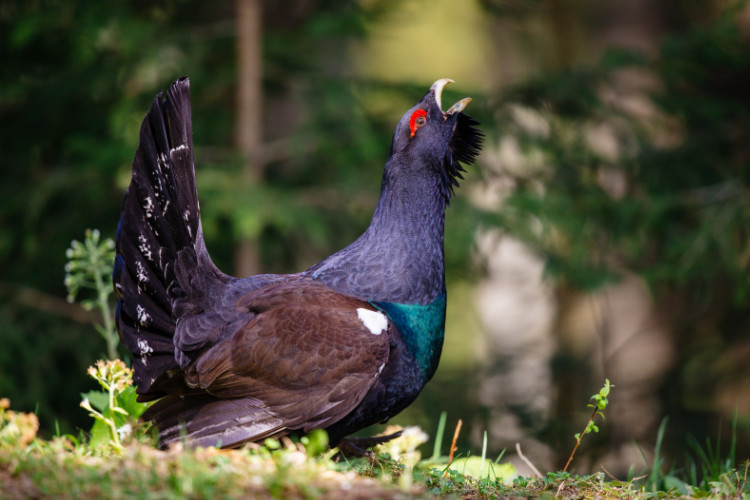
Capercaillie - Forst Eibenstein
The capercaillie, also known as the black grouse, is an imposing bird native to the coniferous forests and mountainous regions of Europe, Asia and North America. With its magnificent plumage and spectacular courtship behavior, the capercaillie is a symbol of the wild and a fascinating animal in the bird world.
The capercaillie is a large bird with a body size of up to one meter and a weight of up to six kilograms. The males are significantly larger than the females and are distinguished by their imposing appearance. They have black and brown plumage with conspicuous white spots, which are especially visible during the mating season. The capercaillie’s tail is broad and fan-shaped, and its head is adorned with conspicuous red skin flaps and feathers.
The capercaillie inhabits mainly coniferous forests and mountainous regions characterized by dense undergrowth and abundant spruce or fir. It is a resident bird, which means that it remains in its native territory throughout the year. The capercaillie is a ground bird and spends most of its time on the forest floor searching for food and hiding from predators.
The capercaillie’s diet consists mainly of plant parts such as buds, needles, leaves and berries. In spring and summer, it also feeds on insects and other invertebrates to meet its energy needs. To reach food in the treetops, the capercaillie jumps from tree trunks or flies short distances.
Particularly impressive about the capercaillie is its courtship behavior. During the mating season in spring, males perform elaborate courtship dances to attract females. They do this by spreading their tails and wings, erecting their necks, and making loud noises by beating their wings against their chests. These impressive courtship rituals serve to demonstrate their strength and magnificence and to attract females.
Reproduction in capercaillie occurs through polygamous seasonal marriages. This means that males court several females in their courtship arena, a special territory. After successful mating, the female lays her eggs in a nest on the forest floor and incubates them for about three weeks. The chicks are nest fledglers and leave the nest shortly after hatching. They are cared for by the mother and find food on their own.
The capercaillie is protected in some regions because its populations are threatened by habitat loss, intensive forestry and hunting.
are. Conservation actions and the preservation of intact forest ecosystems are critical to conserving the capercaillie and ensuring its survival.
The capercaillie is a fascinating bird that embodies the beauty and wildness of the forests. With its imposing appearance and impressive courtship behavior, it is a symbol of diversity and conservation. By protecting its habitats and being respectful of wildlife, we can ensure that the capercaillie will continue to add a special atmosphere to our forests in the future.
